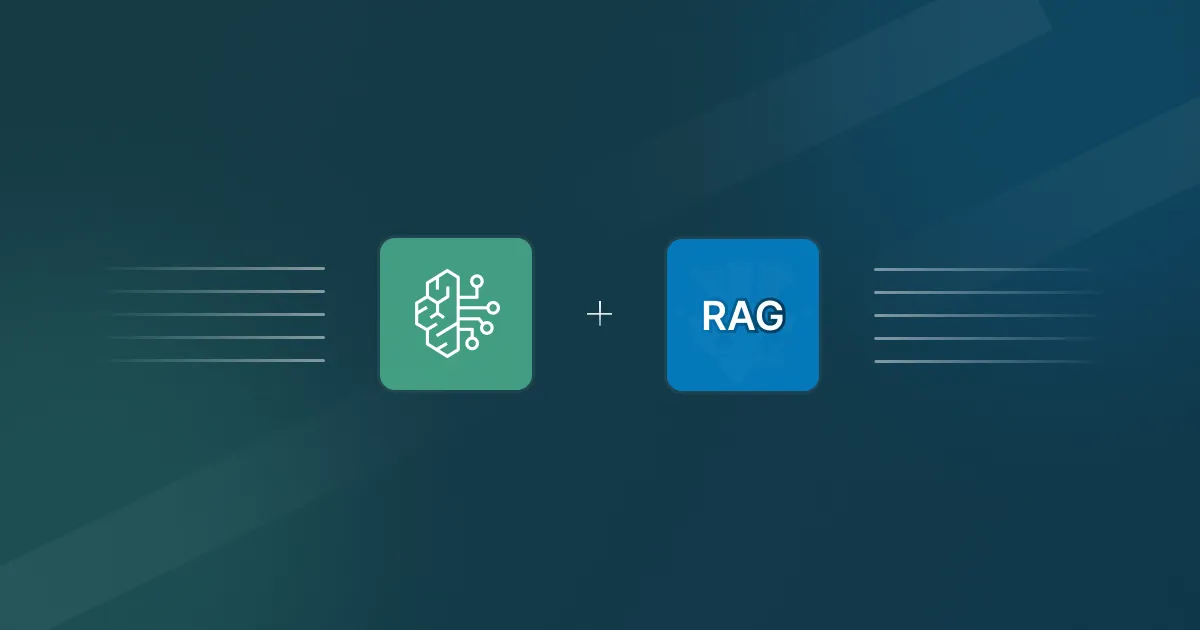Pipeline Optimization: Strategies to Improve Your CI/CD Performance

Continuous Integration and Continuous Deployment (CI/CD) are the basis of every modern DevOps process. They are the reason that focusing on pipeline optimization can reduce build times, enhance code quality, and boost team productivity. Additionally, improving your CI/CD pipeline doesn't just mean developing faster. It also means team members work together better and high-quality software gets delivered consistently.
Building a smooth-running pipeline that supports quick deployments is possible if you stick to the CI/CD best practices. This guide will help you streamline your workflow regardless of whether you are seeking advanced improvements or are new to CI/CD.
Why Optimize Your CI/CD Pipeline?
The CI/CD pipeline meaning refers to an automated sequence of stages that software changes pass through before being released. These stages usually include code integration, automated testing, building, deployment, and monitoring. The primary objective is to enable the fast and continuous delivery of metrics with minimal manual effort.
Knowing this, CI/CD optimization is vital for:
- Faster deployments and reduced time to market
- Lower resource consumption through streamlined processes
- Improved reliability by minimizing deployment failures
- Consistent delivery of high-quality software
Prioritizing the optimization of your pipeline means you support agile development and conscious improvement across organizations.
The Key Strategies of CI/CD Pipeline Optimization
Combining CI/CD best practices and advanced techniques is the key to optimizing your pipeline. This is why it's time to explore the different key strategies that will help you optimize your CI/CD pipeline for better performance.
1. Streamline Your Testing Process

Testing can quickly become a bottleneck in CI/CD pipelines as test suites grow. To optimize, categorize tests into unit, integration, and end-to-end layers. You want to prioritize test impact analysis and run only those affected by recent code changes. Detect and quarantine flaky tests to prevent wasted pipeline time.
At the same time, use dynamic parallelization by intelligently distributing test chunks based on historical execution times and resource availability. You can integrate test result caching to skip tests with unchanged inputs and dependencies, further accelerating feedback loops.
Enhance the consistency and speed using containers for disposable test environments that spin up and tear down instantly. Pair them with service virtualization to mock external dependencies. Finally, incorporate observability by collecting detailed metrics and logs during test runs. Analyze this data to refine your test suite, focusing on slow or redundant tests.
2. Optimize Build Times
Manual infrastructure provisioning and configuration are slow and error-prone. IaC will ensure consistent, repeatable, and reliable provisioning of your infrastructure while enabling version control and reducing configuration drift.
You may want to integrate automated rollbacks into your CI/CD pipeline to minimize downtime and quickly revert to stable states when deployments fail. Modularize your IaC code for easier maintenance and combine it with automated testing to catch errors early. Incorporate security best practices, such as role-based access control and automated vulnerability scans, to keep your infrastructure secure throughout the deployment lifecycle.
3. Automate Everything
Manual infrastructure provisioning and configuration are slow and error-prone. IaC will ensure consistent, repeatable, and reliable provisioning of your infrastructure while enabling version control and reducing configuration drift.
You may want to integrate automated rollbacks into your CI/CD pipeline to minimize downtime and quickly revert to stable states when deployments fail. Modularize your IaC code for easier maintenance and combine it with automated testing to catch errors early. Incorporate security best practices, such as role-based access control and automated vulnerability scans, to keep your infrastructure secure throughout the deployment lifecycle.
4. Improve Code Quality Early
Shift-left testing involves integrating testing early in the development process. Encourage developers to write and run tests as they code. Catching bugs early will help you accelerate the pipeline and reduce the complexity and cost of fixes later.
5. Use the Right Tools
Choose the right CI/CD platform that offers comprehensive features and seamless integrations. It should also align with your specific needs, such as ease of use, scalability, and support for parallel execution. Always prioritize tools that simplify complex workflows and enable automation at scale.
Complement your CI/CD platform with comprehensive monitoring and logging solutions to gain real-time visibility into your pipeline's performance.
6. Reduce Deployment Size
Adopting a microservices architecture is a powerful strategy to minimize deployment size and accelerate release cycles. By breaking down your application into smaller, independent services, you can target deployments to only the components that have changed. It will help you to avoid the overhead of redeploying the entire system.
Beyond architecture, optimizing your build artifacts and container images is equally important. Remove unnecessary files and dependencies to shrink package sizes, which leads to faster deployments and less strain on your infrastructure.
7. Enhance Security Checks

Integrating security checks early in the CI/CD pipeline can save you valuable time by catching vulnerabilities before they reach production. Embedding the security gates is a way to ensure that only code meeting your security standards progresses through the pipeline. This way, the risk is reduced without slowing down development velocity.
Beyond automated scans, you should also implement continuous monitoring of your CI/CD environment to detect and respond to security threats in real-time. Combine this with strict access controls, least-privilege policies, and secure configuration management to harden your pipeline.
8. Improve Feedback Loops
Automated feedback loops provide developers with immediate insights into the effects of code changes. You can integrate tools that deliver real-time notifications on build status, test results, and deployment outcomes. The continuous delivery tools enhance communication by promptly alerting developers to issues, enabling faster diagnosis and resolution.
In addition to automation, schedule regular pipeline reviews with your development teams to uncover inefficiencies that automated tools may overlook. Direct feedback from those interacting with the pipeline daily helps identify bottlenecks and areas for refinement.
9. Document Your Processes
Maintain clear and up-to-date documentation of your CI/CD processes. This includes covering everything from pipeline setup and test execution to deployment procedures and rollback strategies. Well-structured documentation ensures that all stakeholders understand the workflow, which reduces errors and accelerates onboarding for new team members.
Use version control systems to manage your documentation. This will assist you in tracking changes, maintaining historical records, and quickly reverting to previous versions when necessary. This CI/CD best practice ensures that your team always accesses the most current and accurate information.
Real-World Example: Streamline CI/CD Pipeline
It's time to discuss a real-world example of pipeline optimization. Let's say your software development team was faced with slow deployments. Initially, your pipeline took over an hour to deploy changes due to lengthy test suites, inefficient builds, and manual processes. By focusing on the key pipeline optimization strategies, your team was able to reduce deployment time to under 10 minutes.
Here are four main improvements your team made to achieve faster, more reliable deployments and improved overall pipeline efficiency:
- Optimized testing and parallelization: Your team restructured the test suite by categorizing the tests and running unit tests on every commit, while scheduling integration and end-to-end tests less frequently. The team also split tests into smaller chunks and executed them in parallel, significantly cutting down execution time.
- Incremental builds and dependency caching: Incremental builds were adopted using Bazel to rebuild only changed components, while avoiding complete rebuilds. Alongside this, your team implemented caching mechanisms to store and reuse dependencies across builds. This helped to reduce redundant downloads and speed up build processes.
- Infrastructure automation and rollbacks: Automated rollback processes were integrated to quickly revert to stable states when deployment issues occurred, to minimize downtime.
Choosing the Best CI/CD Platform for Pipeline Optimization
To consolidate your CI/CD pipeline optimization efforts, you need to find an all-in-one platform. There are numerous choices to choose from, so it's recommended that you consider the following when evaluating the platforms:
- Ease of integration with your existing tools and workflows
- Support for parallel execution and scalability
- Comprehensive monitoring and logging capabilities
- Built-in security features and compliance support
- User-friendly interface and strong community support
Microtica, GitLab CI/CD, and Travis CI are considered popular platforms offering unique strengths. It's worth mentioning that, unlike many tools that require complex integrations, Microtica provides an all-in-one solution for pipeline automation. You can:
- Manage the entire CI/CD process in a single platform
- Automate infrastructure provisioning and deployment
- Benefit from integrated monitoring and robust security checks
Conclusion
Pipeline optimization is an ongoing process that requires attention to detail and a commitment to continuous improvement. You can achieve faster, more efficient deployments if you follow the above CI/CD best practices. Keep monitoring your pipeline's performance and iterating on improvements to maintain an agile and responsive development workflow.
Apply these optimization strategies today to unlock faster, more reliable software delivery and maintain a competitive edge in your development workflow.
FAQs
How can machine learning enhance CI/CD pipeline optimization?
Machine learning can analyze historical build and test data to predict failures, optimize test selection, and dynamically allocate resources. Predictive models help skip unnecessary builds or tests, prioritize critical tasks, and detect anomalies early.
What role does chaos engineering play in pipeline optimization?
Chaos engineering introduces controlled failures into the CI/CD pipeline to test system resilience and recovery processes. Teams can optimize rollback strategies, improve fault tolerance, and ensure smoother deployments under real-world conditions by proactively identifying weak points and failure modes.
How can pipeline optimization reduce cloud infrastructure costs?
Optimized pipelines minimize resource usage by leveraging incremental builds, caching, parallel execution, and ephemeral environments. Efficient resource allocation and automated scaling prevent overprovisioning, directly lowering cloud compute and storage expenses.
Subscribe to receive the latest blog posts to your inbox every week.
*By subscribing you agree to with our Privacy Policy.

Relevant Posts
.webp)


